Physical Address
304 North Cardinal St.
Dorchester Center, MA 02124
Fractures of the proximal ulna are thought to be relatively uncommon in children, accounting for approximately 5% of elbow fractures. The true incidence may be higher because many are missed. Monteggia fractures may be undiagnosed 50% of the time, even at children's hospitals. Olecranon fractures, particularly sleeve fractures, may also be missed due to the late ossification of the olecranon. The first ossification center in the proximal ulna, the olecranon apophyseal center, does not appear until about 9 years of age ( Fig. 31.1 ). Often, a secondary epiphyseal ossification center will appear closer to the joint, giving the olecranon a fragmented appearance. As the ossification centers expand, they create the impression of an olecranon fracture. Whereas the olecranon can fracture at the apophysis, this is rare and without underlying pathology such as osteogenesis imperfecta ( Fig. 31.2 ).
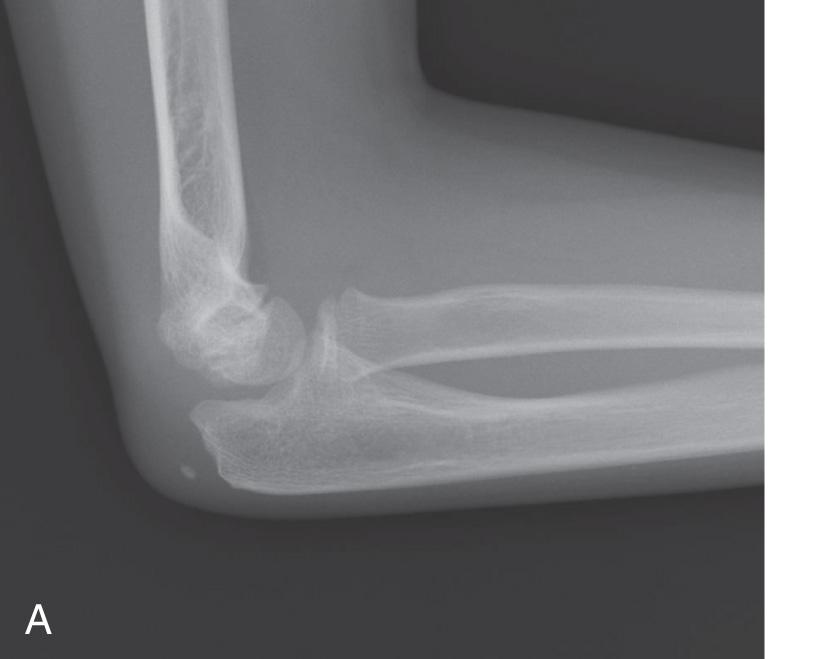
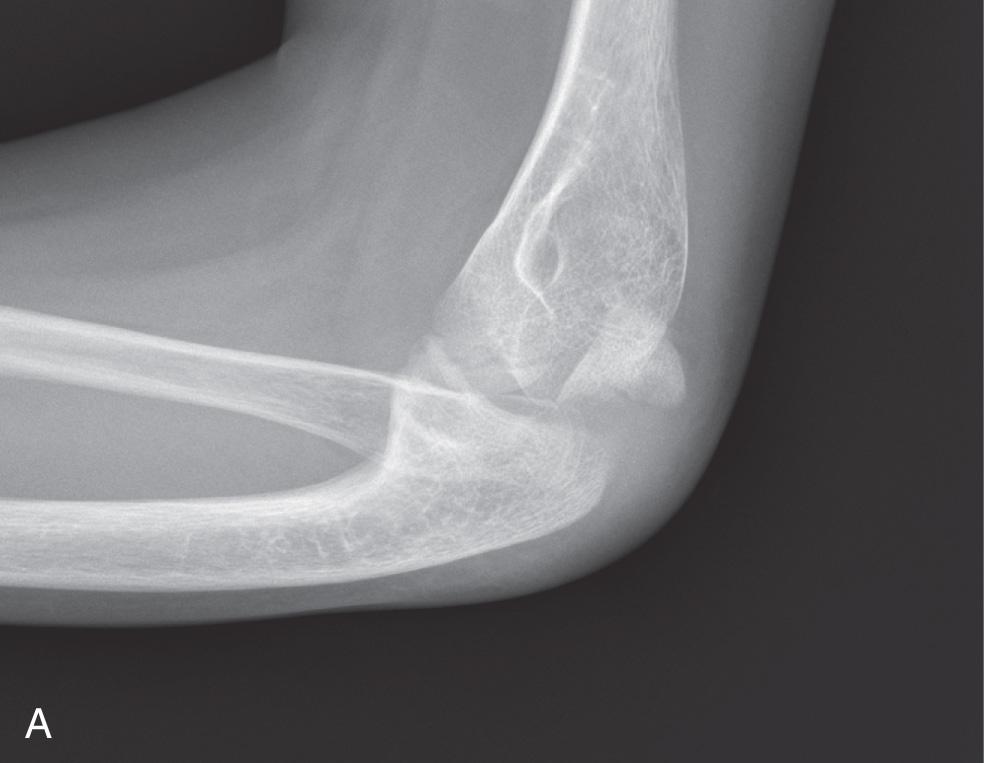
Most fractures of the proximal ulna are intraarticular, either affecting the ulnohumeral joint or the proximal radioulnar joint (PRUJ), or both. Except for small apophyseal triceps avulsion fractures, olecranon fractures typically extend into the ulnohumeral joint. If the olecranon fracture occurs at the metaphysis near the level of the coronoid, the distal segment (the ulna, radius, and PRUJ) dislocates while the olecranon remains reduced in the ulnohumeral joint ( Fig. 31.3 ).
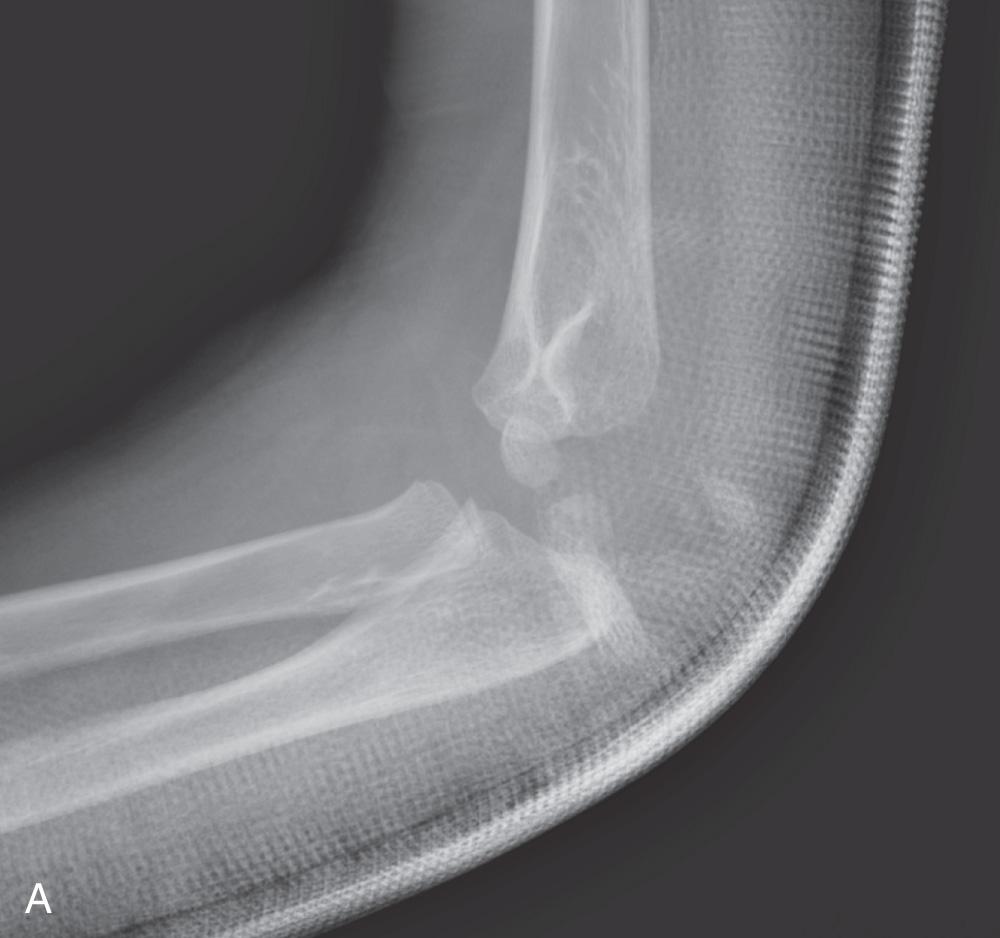
The transolecranon fracture–dislocation occupies a gray area in classification, somewhere between a Monteggia and an olecranon fracture ( Fig. 31.4 ). Whereas this has been called a Monteggia variant, it does not meet Monteggia's criteria since the annular ligament remains competent and the PRUJ remains reduced. The critical portion of the collateral ligaments in a transolecranon fracture–dislocation can variably be attached to the distal fragment, or to a comminuted fragment, making surgical intervention both necessary and challenging.
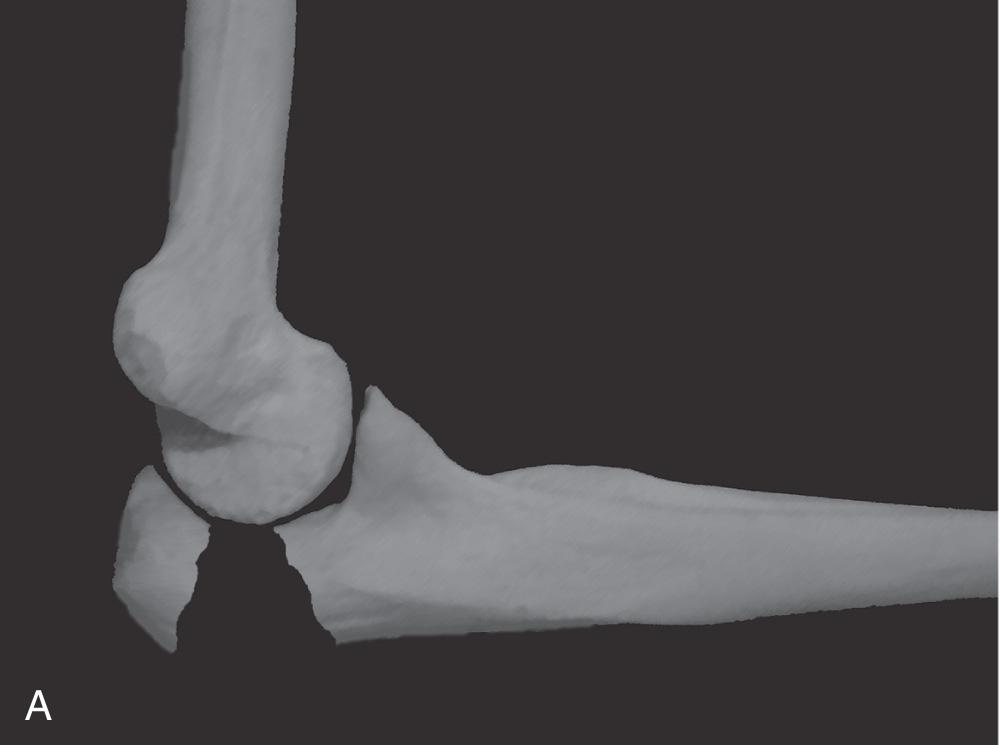
Fractures of the metadiaphysis and diaphysis of the ulna violate the forearm ring, forcing a failure at another portion of the ring. These are the true Monteggia fractures, leading to a dislocation of the PRUJ and the radiocapitellar joint. Occasionally, the annular ligament remains competent, restraining the radial head while the radial shaft displaces, causing a radial neck fracture ( Fig. 31.5 ).
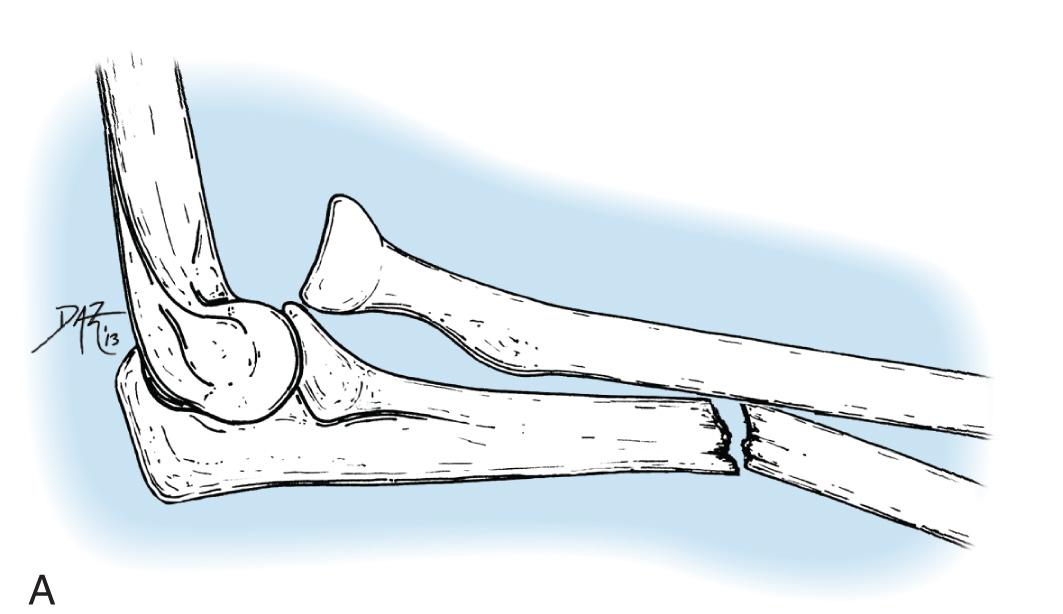
The mechanism of all of these fractures is typically an axial load, but direct impact can also be a cause. The triceps, biceps, and brachialis are strong deforming forces, most often causing the olecranon to migrate proximally, the proximal radius to move anteriorly and supinate, and the ulna to flex or dislocate anteriorly. Whereas olecranon fractures can be high-energy injuries, proximal ulnar fractures in general can have disarmingly minimal edema and pain. The combination of subtle symptoms, signs, and radiographic findings often results in missed diagnoses and less than optimal treatment of these injuries.
Monteggia fractures are typically underappreciated because swelling and pain can be minimal. However, the diagnosis can often be made on a clinical basis by palpating the radiocapitellar joint and recognizing the absence of the radial head in its usual location. Associated nerve injuries are rare and usually self-limited. The posterior interosseous nerve can be tethered by the anteriorly dislocated radial head and compressed by the arcade of Frohse.
As with distal humeral fractures, understanding the radiographic appearance of the developing skeleton is crucial to accurately diagnosing fractures of the ulnar diaphysis. The proximal ulna is complex, sharing an articulation not only with the distal humerus and the proximal radius but also connected to the distal radioulnar joint and the remainder of the forearm. Radiographic examination should be focused on the elbow, where a true lateral image is an absolute necessity. Separate forearm views are also required. The radial head and shaft should point to the capitellum in all views, even unintended obliques.
The capitellar ossification center is not truly centered on the capitellum, making the radiocapitellar line less reliable in younger patients. If the capitellum is not yet ossified, the diagnosis can be difficult to make even with a true lateral view. Suspicion should arise if the proximal aspect of the radial shaft diverges from the ulnar shaft on the forearm lateral view or if there is plastic deformation of the ulna (see Fig. 31.6 ). Plastic deformation is typically best seen on the lateral forearm view, where a line drawn along the posterior border of the ulna should show the normal convexity of the ulna. Contralateral elbow films may be helpful for comparison.
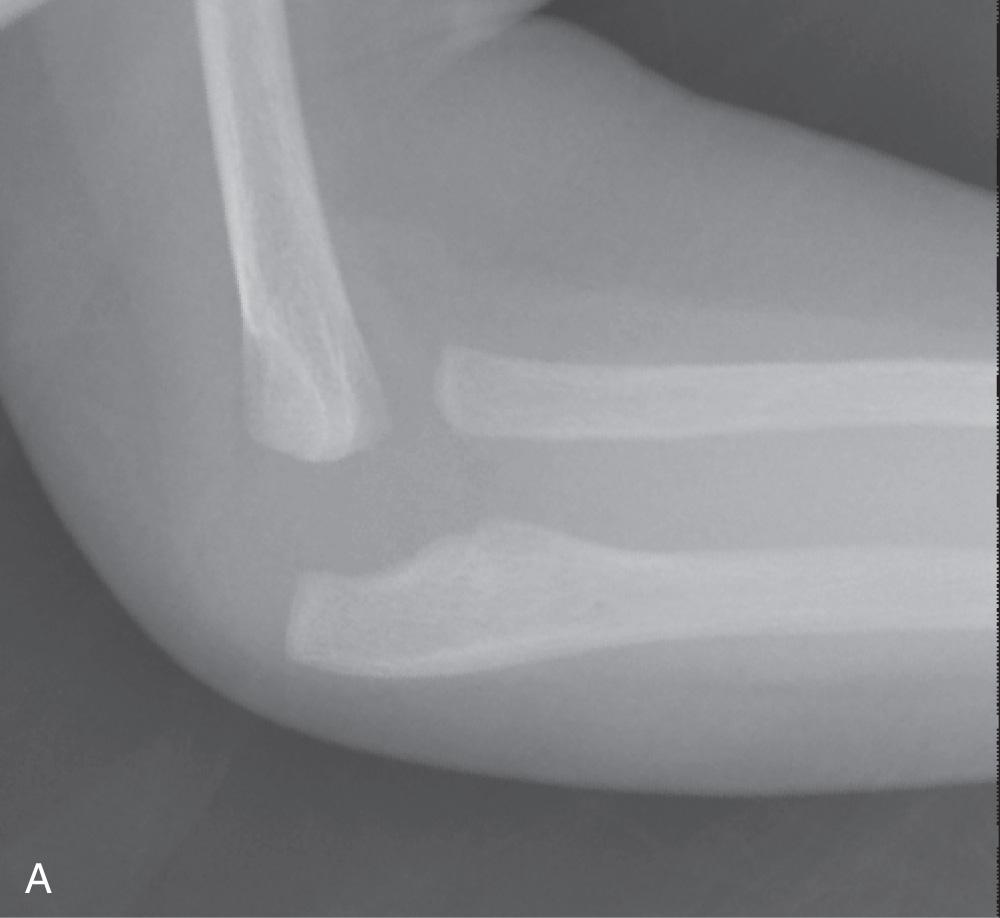
Any radial head dislocation in a child should be considered a Monteggia fracture until proven otherwise, and particularly so if the dislocation is anterior. Posterior radial head dislocations can be part of a terrible triad injury, posterolateral rotatory instability, an untreated nursemaid's elbow, or an unreduced elbow dislocation. Elbow dislocations are typically accompanied by marked soft tissue edema and ecchymosis, which are rare in Monteggia injuries.
Congenital radial head dislocations can present a diagnostic dilemma, as some “congenital” dislocations may be late-presenting traumatic dislocations. Congenital dislocations tend to be bilateral and present with marked forearm rotation loss. Concavity of a dislocated radial head is a sign of a recent injury but is difficult to assess in younger children with an incompletely ossified radial head (see Fig. 31.6 ).
Magnetic resonance imaging (MRI) can assess radial head shape even if unossified but requires sedation or general anesthesia in children under the age of 8. We prefer to perform an arthrogram in the operating room in lieu of an MRI, so that the general anesthetic can be used to treat as well as diagnose the injury. Differentiating between late-presenting, convex radial heads and congenital dislocations can be difficult, especially since a history of trauma at some point in the distant past is common to all childhoods.
Become a Clinical Tree membership for Full access and enjoy Unlimited articles
If you are a member. Log in here